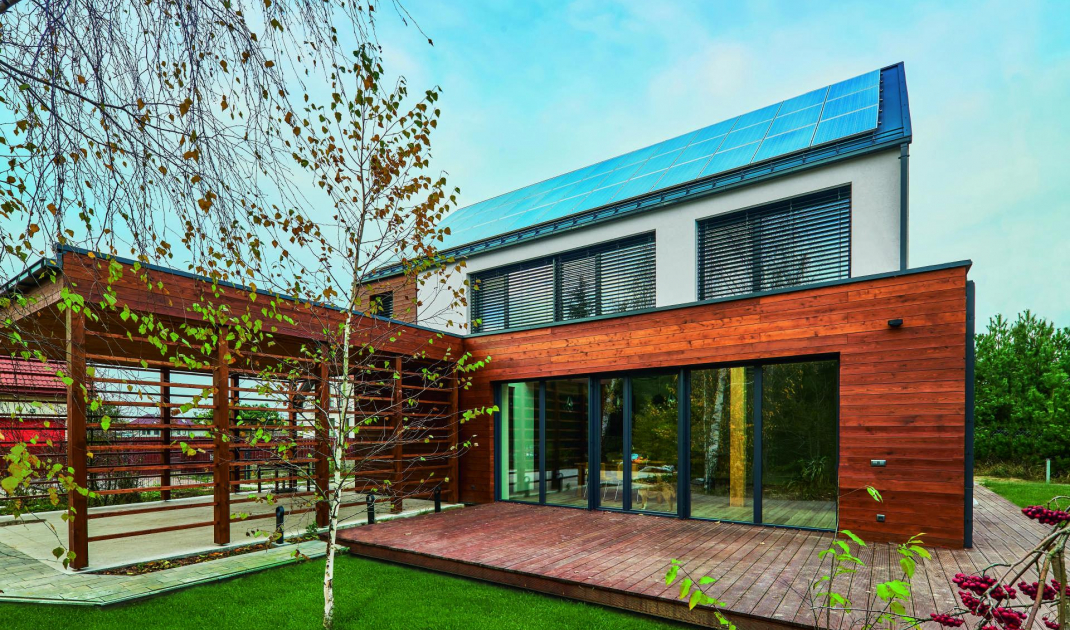Buildings created with passive technology are gaining popularity, as they allow you to optimize your home maintenance expenses.
Passive house
© Finstral / Marco Vega
What is a passive house?
Passive construction originated in Germany. This modern technology is designed to create a house with the lowest possible energy requirements. This is done, among other things, with the help of a simple body, proper building alignment, window placement and thermal insulation. By comparison, the energy demand of a building without insulation can be as high as 160 kWh/m2 per year. In contrast, a house that is certified as passive can not exceed 15 kWh/m2 per year. In addition, it is built to recover the maximum amount of energy from nature. Passive buildings use solutions such as a heat pump, photovoltaic panels, a ventilation circuit with a recuperator, underfloor heating or solar panels. The construction of such a house is more expensive. It is estimated that the difference in price reaches 20%. However, it is worth remembering that thanks to the savings on bills, the expense is quickly recouped.
Passive house
Photo: Bartosz Makowski/Ladny Dom
How to build a passive house?
The most important thing in the construction of a passive house is thermal insulation. It must be remembered from the very beginning. In this type of building a slab foundation is used, that is, a concrete slab with rebar the size of the entire building. Underneath it, polystyrene boards laid in a thick layer are used as moisture and thermal insulation.
A passive house should be built on a level site, preferably without trees. There should also be no tall buildings in the neighborhood. Ideally, the house should be built on a rectangular plan. The roof is also important. The smaller the better, preferably single or gabled. The building should have as simple a body as possible. This will help avoid so-called thermal bridges. So you need to give up all kinds of ornaments, bay windows or dormers, and even balconies.
The interior of a passive house
Photo: Bartosz Makowski/Ladny Dom
The layout of the rooms is also important. The orientation of the building is adjusted to the directions of the world. The interior of a passive house, on the other hand, is designed so that passive solar gains can be achieved, i.e. heating the daytime rooms with sunlight. To this end, all the day-use rooms are oriented to the south. On this side you can also use slope windows, that is, windows that occupy the entire wall of the building. The windows must meet the passivity standard. The most common are models with gas-filled triple-pane compacts. On the north side of the building, ideally, there should be no windows at all. Alternatively, if necessary, use skylights. Also remember to properly seal them. On this side of the house you can plan utility rooms or a garage.
Passive house
© Finstral / Marco Vega
Passive house vs. energy-efficient house
The difference is hidden in the numbers. An energy-efficient house is one that requires up to 40 kWh/m2 per year to heat. So this is as much as 25kWh/m2 more than a passive house. Thus, when building an energy-efficient house, we don't have to make as many compromises. At the same time ,however, the savings will also be less. However, the principles of construction are quite similar. The key issues are still a simple body and good thermal insulation.
Passive house
© Finstral / Marco Vega
Are you building a house? We have more tips for you! Click HERE
































